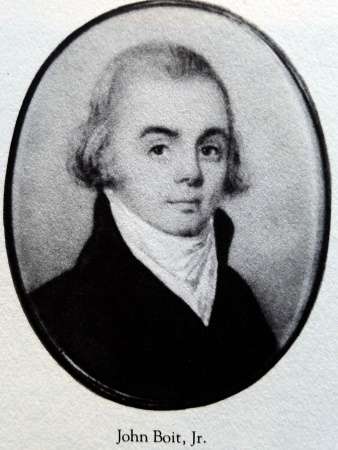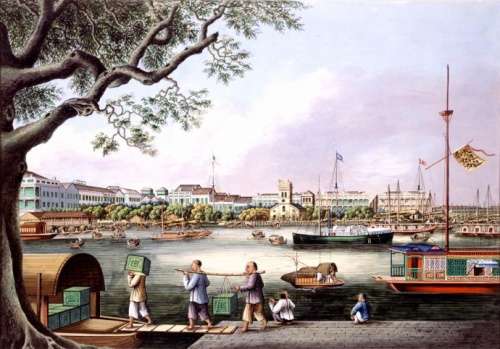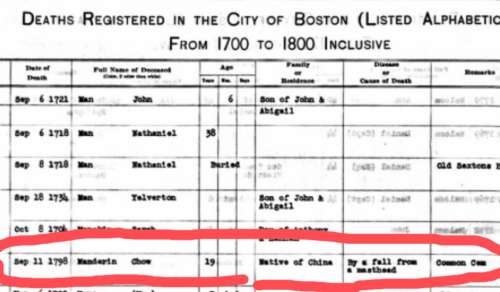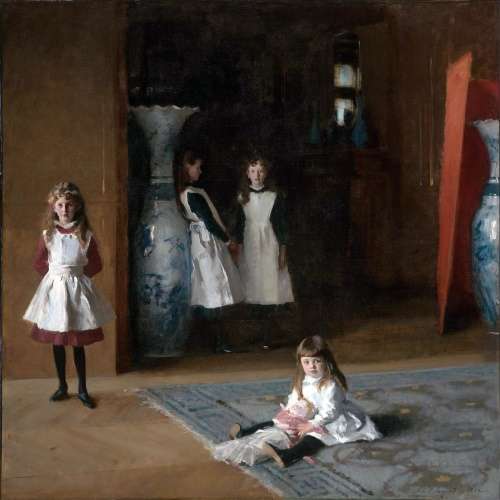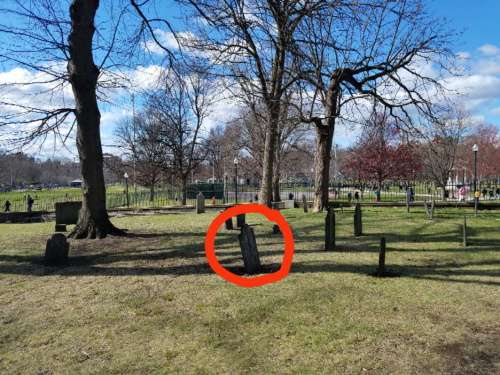Among the graves of British and American Revolutionary War soldiers on Boston Common lies the body of a 19-year old Chinese teenager named Chow. The record of the death of Chow in 1798 is the first known documentation of a Chinese person in the United States.
His remains, just steps from Boston’s Chinatown, are also the first known of a Chinese national in this country.
Chow came to American in the early days of the old China trade. Another young man, John Boit, Jr., may have felt responsible for the untimely death of Chow. Boit probably ordered and paid for the gravestone, a durable, quality stone that reads:
“Here lies interred the body of Chow Manderien, a native of China, aged 19 years, whose death was occasioned on the 11th of Sept 1798 by a fall from the masthead of the ship Mike of Boston. This stone erected to his memory by his affectionate master John Boit Jr.”
A Young Man in the China Trade
The record of the death of Chow can be found in the archives of the deceased of the Boston municipal government in 1798.
Other records tell us the story of Chow: the nautical records kept by John Boit, Jr., and Boit’s family history.
Boit helped pioneer the China trade, which began when in 1783 the Treaty of Paris ended the American Revolution. The British had controlled the tea trade until then. In 1784, The Empress of China sailed to Guangdong, opening the China trade. U.S. merchant ships brought otter skins, ginseng, wine, turpentine, Hawaiian wood and Turkish opium to China. Then on their return they brought tea, porcelain and silk from China.
Drinking tea in Chinese porcelain cups had become fashionable among the western upper class. The status-conscious George Washington bought a large amount of Chinese porcelain. His wife Martha ordered “beautiful thin cotton cloth” from China. The so-called old China trade lasted from 1783 to 1844 and created many millionaires in the United States.
John Boit, Sr., imported goods into Boston, one of the most important ports in the old China trade. The younger Boit’s brother-in-law owned a ship called the Columbia. At 16, Boit sailed the world in the Columbia, capturing and trading otter skins in the Pacific Northwest. The crew then traded the skins for tea and silk n Guangzhou. Along the way they discovered a large river, named the Columbia after the ship.
The Fabulous Voyage
At the age of 19, John Boit, Jr., sailed the world in his own vessel, a 60-foot sloop named Union.
Historian Samuel Eliot Morrison described the voyage as, ‘the most remarkable youthful exploit in this bright dawn of Pacific adventure.’
He left Newport on Aug. 1, 1794 with a 22-man crew, 18 guns and a fullc argo. They sailed around Cape Horn in February, traded for otter skins in the Pacific Northwest, fought Indians in Puget Sound, sighted Hawaii in October and arrived at the Whampoa anchorage near Guangzhou in December. There he traded his otter for silk and nankeen, and picked up passengers. One of them was 17-year-old Chow.
Chow
They sailed through the China Sea, the Straits of Sunda and the Indian Ocean to Mauritius, where Boit picked up coffee and pepper. The crew had to repair the ship’s mast after passing Madagascar, and then ran into a four-day gale that stove in the vessel’s bulwarks. They rounded the Cape of Good Hope in May, caught the southeast trades and on July 8 sailed into Boston Harbor.
The Union was possibly the only single-masted vessel to circumnavigate the globe, wrote Morrison in 1922.
First Chinese Boy
Qian Huang produced a documentary about the death of Chow, Meihua History, The first Chinese boy who came to the United States.
In it, she imagines what the 17-year-old must have seen and heard once he left Guangzhou on Jan. 12, 1796.
Raging through the waves of the Indian Ocean, going around the Cape of Good Hope in Africa. In how many ports did [the ship] berth, how many skin colors did he encounter? How many languages did he hear?
How did he react to the western scenery in Boston: majestic European buildings, open roads, gorgeous foreigners, everything from vegetables and fruits to kitchens, baths and furniture, Everything is so novel and fantastic. When his Chinese intestines and stomachs met Western food, he was accustomed to burning in the hot sun, and met the relentlessness of the snow and ice in Boston. Has he ever been homesick?
Foul, Leaky and Slow
While unloading the Union, young Boit’s brother-in-law bought a French privateer, a snow named George, to sail to Mauritius, a small island off Madagascar. There he would sell it back to the French. He hired Boit as captain.
The George, wrote Morrison, was ‘foul, leaky and slow.’ The sailors had to constantly pump water from the boat, which left them exhausted. They needed help from the French authorities to limp into port. Boit said he hoped he’d never sail in a ship like that again.
The Chinese teenager Chow appears in the family history written by the descendants of young Boit. When they arrived on Mauritius, Boit found a house on the shore, and Chow took care of him. Boit called Chow, “My faithful servant.” The family history gave him another name: Libei. Today his name would be written Zhou Libei.
Boit chartered a vessel from Mauritius and sailed back to South Carolina. From there they presumably took a coasting vessel to Boston.
The Death of Chow
Shortly after they returned to Boston, Chow died in a fall from a mast on the vessel Mike.
Centuries later, Qian Huang visited the Central Burying Ground. She compared the tombstones in the storied cemetery from those of the same period. Chow’s tombstone is obviously good, she wrote. Boit chose a quality stone and lettering. Chow’s tombstone is as large as the tombstones of other captains of the same period. The lettering describing the death of Chow is even clearer than the lettering on other tombstones.
She notes that only an eighth of the deceased had tombstones in the 18th century. The captain, she concluded, ‘was very satisfied’ with Chow.
The Boit family maintained its wealth and prominence in Massachusetts. A famous painting, two miles from Chow’s headstone, hangs on the wall of the Museum of Fine Arts Boston. The four girls in the painting are descended from Capt. John Boit, Jr. John Singer Sargent, the preeminent American portraitist, painted The Daughters of Edward Darley Boit.
Not the First, But…
Huang writes:
Every year, especially in the summer, the Boston Museum of Art welcomes many Chinese tourists, as well as Chinese students and parents. When our compatriots stopped in front of this famous painting, they did not know that the ancestor of the four little girls in this painting buried a Chinese in the distance with grief in the early autumn days 220 years ago.
The teenager surnamed Chow was not the first Chinese immigrant to arrive in an American oceangoing vessel from China, wrote Huang. But because of the death of Chow in Boston Harbor, and the maintenance of the cemetery, heis the only one who left physical evidence and a written record. His cemetery is also the earliest Chinese cemetery discovered to date in the United States.
With thanks to Qian Huang, Meihua History, The first Chinese boy who came to the United States, and to Samuel Eliot Morrison, The Maritime History of Massachusetts, 1783-1860. This story was updated in 2024.


